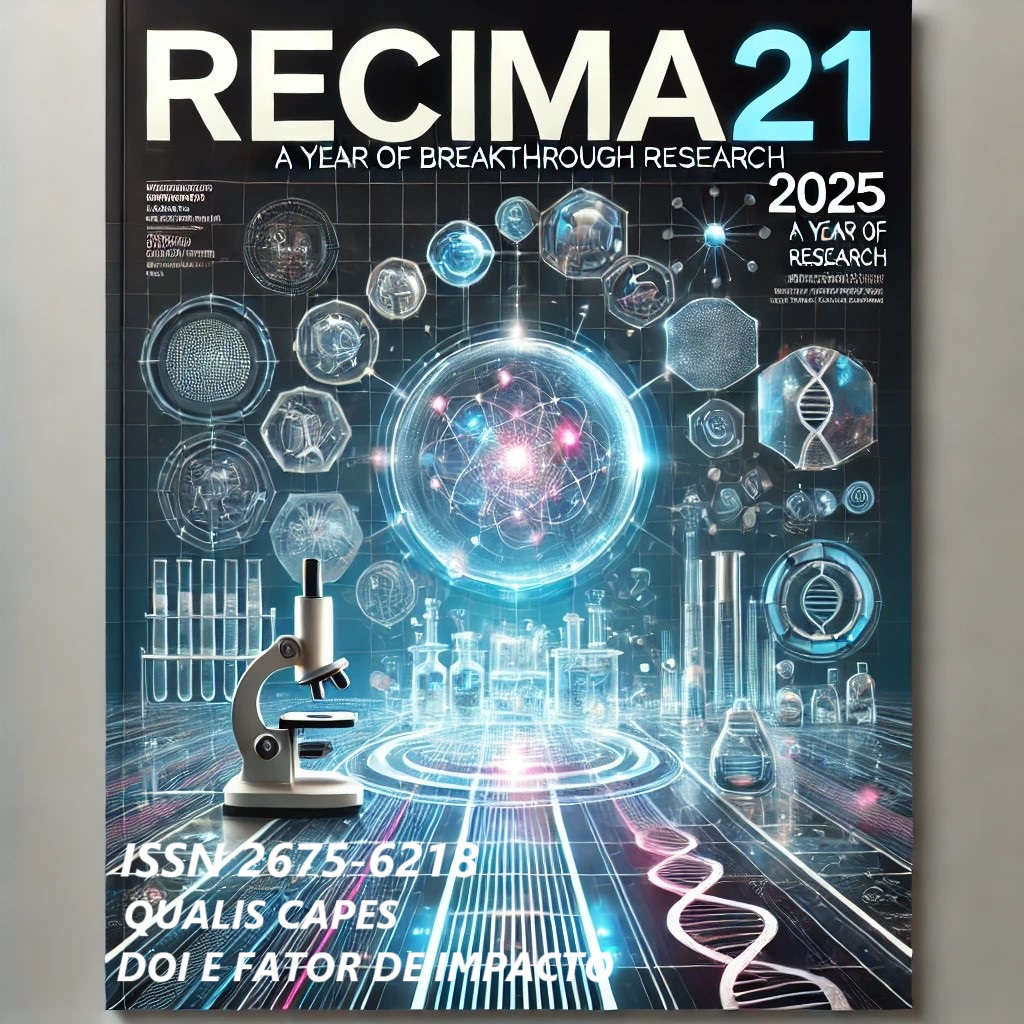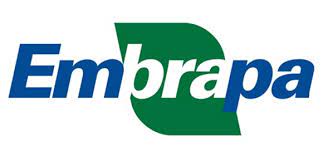REVISIÓN SISTEMÁTICA ACERCA DE LA CONTAMINACIÓN Y DEGRADACIÓN DEL DIÉSEL Y BIODIÉSEL DURANTE EL ALMACENAMIENTO
DOI:
https://doi.org/10.47820/recima21.v6i10.6832Palabras clave:
Biodiésel, Contaminación microbiana, Degradación de combustibles, Almacenamiento, Revisión SistemáticaResumen
El almacenamiento de diésel y biodiésel presenta desafíos significativos relacionados con la contaminación y la degradación a lo largo del tiempo. El biodiésel, debido a su alta higroscopicidad, absorbe fácilmente agua, creando condiciones favorables para la proliferación microbiana y el avance de reacciones oxidativas. Estos factores resultan en la formación de borras, sedimentos y biopelículas, que comprometen la calidad del combustible, provocan obstrucción de filtros, fallas en sistemas de inyección y corrosión en tanques metálicos. Microorganismos como Pseudomonas, Aspergillus, Candida y Bacillus han sido frecuentemente asociados a estos procesos, acelerando la deterioración. Los impactos operativos incluyen un aumento en los costos de mantenimiento, sustitución frecuente de filtros y reparaciones en componentes dañados. En contrapartida, las prácticas preventivas han demostrado beneficios económicos y técnicos. Entre las principales estrategias se destacan: drenaje periódico del agua, limpieza y monitoreo microbiológico de tanques, aplicación de aditivos antioxidantes y biocidas, además de la técnica de fuel polishing, que promueve la recirculación del combustible con filtrado, eliminando agua libre, sedimentos y biopelículas. Esta Revisión Sistemática de la Literatura identificó que los métodos combinados —control de la humedad, aditivación adecuada y filtrado activo— son los más eficaces para mitigar riesgos, prolongar la vida útil de los equipos y preservar la eficiencia energética. El estudio también evidencia la contribución de herramientas computacionales, como el software StArt, que ayudan en la organización de las referencias y en la selección rigurosa de artículos, reforzando la importancia de enfoques integrados y fundamentados para asegurar la calidad de los combustibles almacenados.
Descargas
Referencias
ALCÁNTARA-CARMONA, A.; LÓPEZ-GIMÉNEZ, F. J.; DORADO, M. P. Compatibility studies between an indirect injection diesel injector and biodiesel with different composition: Stationary tests. Fuel, v. 307, p. 121788, 2022. Disponível em: https://doi.org/10.1016/j.fuel.2021.121788. Acesso em: 14 jul. 2025. DOI: https://doi.org/10.1016/j.fuel.2021.121788
AMERICAN SOCIETY FOR TESTING AND MATERIALS. ASTM D6751: Standard Specification for Biodiesel Fuel Blend Stock (B100) for Middle Distillate Fuels. West Conshohocken, PA, 2020.
AMERICAN SOCIETY FOR TESTING AND MATERIALS. ASTM D7467: Standard Specification for Diesel Fuel Oil, Biodiesel Blend (B6 to B20). West Conshohocken, PA, 2020.
ASLAN, Christian et al. Influence of axenic culture of Bacillus clausii and mixed culture on biofilm formation, carbon steel corrosion, and methyl ester degradation in B30 storage tank system. Journal of Environmental Chemical Engineering, v. 10, p. 108013, 2022. Disponível em: https://doi.org/10.1016/j.jece.2022.108013. Acesso em: 14 jul. 2025 DOI: https://doi.org/10.1016/j.jece.2022.108013
ATAKPA, Edidiong Okokon et al. Improved degradation of petroleum hydrocarbons by co-culture of fungi and biosurfactant-producing bacteria. Chemosphere, v. 290, p. 133337, 2022. Disponível em: https://doi.org/10.1016/j.chemosphere.2021.133337. Acesso em: 14 jul. 2025. DOI: https://doi.org/10.1016/j.chemosphere.2021.133337
ATEEQ, Muhammad et al. Evaluating corrosion effect of biodiesel produced from neem oil on automotive materials. Materials Today Sustainability, v. 18, 100130, 2022. Disponível em: https://doi.org/10.1016/j.mtsust.2022.100130. Acesso em: 14 jul. 2025. DOI: https://doi.org/10.1016/j.mtsust.2022.100130
ATIKPO, E.; AIGBODION, V. S.; VON KALLON, D. V. CaCO₃-derived from eggshell waste for improving the corrosion resistance of zinc composite coating on mild steel for biodiesel storage tank. Chemical Data Collections, v. 37, 100794, 2022. Disponível em: https://doi.org/10.1016/j.cdc.2021.100794. Acesso em: 14 jul. 2025. DOI: https://doi.org/10.1016/j.cdc.2021.100794
AWANG, M. S. N. et al. Effect of diesel-palm biodiesel fuel with plastic pyrolysis oil and waste cooking biodiesel on tribological characteristics of lubricating oil. Alexandria Engineering Journal, v. 61, p. 7221–7231, 2022. Disponível em: https://doi.org/10.1016/j.aej.2021.12.062. Acesso em: 14 jul. 2025. DOI: https://doi.org/10.1016/j.aej.2021.12.062
BAIHAQI, Byan; ASLAN, Christian; DEVIANTO, Hary; HARIMAWAN, Ardiyan. Influence of culture type interaction on biofilm formation, carbon steel corrosion, and fuel degradation in B35 storage system. Materials Chemistry and Physics, v. 334, p. 130409, 2025. DOI: https://doi.org/10.1016/j.matchemphys.2025.130409. Acesso em: 14 jul. 2025. DOI: https://doi.org/10.1016/j.matchemphys.2025.130409
BIBLIOTECA PROF. PAULO DE CARVALHO MATTOS. Tipos de revisão de literatura. Botucatu: Faculdade de Ciências Agronomicas UNESP Campus de Botucatu, 2015. https://www.fca.unesp.br/Home/Biblioteca/tipos-de-evisao-de-literatura.pdf
CARLUCCI, Renzo; JÄGER, Sebastián N.; LABADIE, Guillermo R. Steryl glucosides recovered from biodiesel tank deposits are an excellent source of phytosterols. Industrial Crops and Products, v. 187, p. 115307, 2022. Disponível em: https://doi.org/10.1016/j.indcrop.2022.115307. Acesso em: 14 jul. 2025. DOI: https://doi.org/10.1016/j.indcrop.2022.115307
CAVALHEIRO, Leandro Fontoura et al. Characterization of residues and evaluation of the physico-chemical properties of soybean biodiesel and biodiesel: Diesel blends in different storage conditions. Renewable Energy, v. 151, p. 454–462, 2020. DOI: 10.1016/j.renene.2019.11.039. DOI: https://doi.org/10.1016/j.renene.2019.11.039
CESTARI, Alexandre; ARAÚJO, Murilo de; OLIVEIRA, Diego Carlos de. Corrosion behavior of metallic surfaces in biodiesel evaluated by Atomic Force Microscopy, Vickers Micro Hardness, and Copper Strip Test. Engineering Failure Analysis, v. 124, 2021. DOI: 10.1016/j.engfailanal.2021.105329. Acesso em: 14 jul. 2025. DOI: https://doi.org/10.1016/j.engfailanal.2021.105329
COOPER, Harris. Research Synthesis and Meta-Analysis: A Step-by-Step Approach. 5. ed. Los Angeles: SAGE Publications, 2016. DOI: https://doi.org/10.4135/9781071878644
CORREA, Camila et al. Use of digital images to count colonies of biodiesel deteriogenic microorganisms. Journal of Microbiological Methods, v. 178, p. 106063, 2020. Disponível em: https://doi.org/10.1016/j.mimet.2020.106063. Acesso em: 14 jul. 2025. DOI: https://doi.org/10.1016/j.mimet.2020.106063
DE MELLO, J. A. et al. Fuel biodegradation and molecular characterization of microbial biofilms in dieselbiodiesel blends. Journal of Applied Microbiology, 2013.
DESHPANDE, Sunil; JOSHI, Akshay; VAGGE, Shashikant; ANEKAR, Nitinkumar. Effect of heat treatment on corrosion behavior of nodular (spheroidal graphite) cast iron using electrochemical tests in biodiesel environments. Materials Today: Proceedings, v. 28, p. 684–692, 2020. Disponível em: https://doi.org/10.1016/j.matpr.2019.12.277. Acesso em: 14 jul. 2025. DOI: https://doi.org/10.1016/j.matpr.2019.12.277
DODOS, G. S. et al. Effects of microbiological contamination in the quality of biodiesel fuels. ERDMANN, Maren et al. Photo-oxidation of PE-HD affecting polymer/fuel interaction and bacterial attachment. NPJ Materials Degradation, v. 4, n. 18, 2020. Disponível em: https://doi.org/10.1038/s41529-020-0122-1. Acesso em: 14 jul. 2025. DOI: https://doi.org/10.1038/s41529-020-0122-1
FATHURRAHMAN, Nur Allif et al. Long-term storage stability of incorporated hydrotreated vegetable oil (HVO) in biodiesel-diesel blends at highland and coastal areas. Fuel Communications, v. 18, 100107, march 2024. DOI: https://doi.org/10.1016/j.jfueco.2024.100107
FLOYD, James G.; STAMPS, Blake W.; GOODSON, Wendy J.; STEVENSON, Bradley S. Locating and quantifying carbon steel corrosion rates linked to fungal B20 biodiesel degradation. Applied and Environmental Microbiology, v. 87, n. 24, e01177-21, 2021. Disponível em: https://doi.org/10.1128/AEM.01177-21. Acesso em: 14 jul. 2025. DOI: https://doi.org/10.1128/AEM.01177-21
GABRIEL FILHO, Luís Roberto Almeida et al. Evapotranspiração automatizada: uma revisão sistemática e meta-análise. Revista Observatório, Palmas, v. 9, n. 1, p. a41pt, 2023. DOI: 10.20873/uft.2447-4266.2023v9n1a41pt. Disponível em: https://sistemas.uft.edu.br/periodicos/index.php/observatorio/article/view/18352. Acesso em: 27 ago. 2025. DOI: https://doi.org/10.20873/uft.2447-4266.2023v9n1a41pt
GONÇALVES, Henrique Luiz; FREGOLENTE, Patrícia Bogalhos Lucente; MACIEL, Maria Regina Wolf; FREGOLENTE, Leonardo Vasconcelos. Formulation of hydrogels for water removal from diesel and biodiesel. Separation Science and Technology, v. 56, n. 2, p. 374–388, 2021. DOI: 10.1080/01496395.2019.1709506. Acesso em: 14 jul. 2025. DOI: https://doi.org/10.1080/01496395.2019.1709506
GOPALAN, Kesavan et al. The impact of biodiesel and alternative diesel fuel components on filter blocking through accelerated testing on a novel high pressure common rail non-firing rig. Fuel, v. 282, 118850, 2020. Disponível em: https://doi.org/10.1016/j.fuel.2020.118850. Acesso em: 14 jul. 2025. DOI: https://doi.org/10.1016/j.fuel.2020.118850
HOREL, S.; SCHIEWER, S. The effect of microbial growth on physicochemical properties of diesel/biodiesel mixtures. Applied Microbiology and Biotechnology, [S. l.], v. 105, n. 6, p. 2445-2457, 2021. Springer. DOI: https://doi.org/10.1007/s00253-021-11181-9. Disponível em: https://link.springer.com/article/10.1007/s00253-021-11181-9. Acesso em: 3 set. 2025.
HOSSAIN, M.; ISRAT, S. S.; MUNTAHA, N.; JAMAL, M. S. Effect of antioxidants and blending with diesel on partially hydrogenated fish oil biodiesel to upgrade the oxidative stability. Bioresource Technology Reports, v. 17, 100938, 2022. Disponível em: https://doi.org/10.1016/j.biteb.2021.100938. Acesso em: 14 jul. 2025. DOI: https://doi.org/10.1016/j.biteb.2021.100938
KITCHENHAM, Barbara; CHARTERS, Stuart. Guidelines for performing Systematic Literature Reviews in Software Engineering. Version 2.3. EBSE Technical Report, Keele University and Durham University Joint Report, 2007.
KOLOBENG, Rebaone; KETLOGETSWE, Clever; JONAS, Mbako; MAUTLE, Dimpho. Effects of moisture content on biodiesel (B100) properties during storage: A comparative analysis between biodiesel produced from used cooking oil and beef tallow. Sustainable Energy Technologies and Assessments, v. 54, 102844, 2022. Disponível em: https://doi.org/10.1016/j.seta.2022.102844. Acesso em: 14 jul. 2025. DOI: https://doi.org/10.1016/j.seta.2022.102844
KOMARIAH, Leily Nurul; ARITA, Susila; PRIANDA, Baikuni E.; DEWI, Tri K. Technical assessment of biodiesel storage tank: A corrosion case study. Journal of King Saud University – Engineering Sciences, v. 35, p. 232–237, 2023. Disponível em: https://doi.org/10.1016/j.jksues.2021.03.016. Acesso em: 14 jul. 2025. DOI: https://doi.org/10.1016/j.jksues.2021.03.016
KUGELMEIER, Cristie Luis et al. Corrosion behavior of carbon steel, stainless steel, aluminum and copper upon exposure to biodiesel blended with petrodiesel. Energy, v. 226, 120344, 2021. Disponível em: https://doi.org/10.1016/j.energy.2021.120344. Acesso em: 14 jul. 2025. DOI: https://doi.org/10.1016/j.energy.2021.120344
LAU, Chi Hou et al. Insights into the effectiveness of synthetic and natural additives in improving biodiesel oxidation stability. Sustainable Energy Technologies and Assessments, v. 52, p. 102296, 2022. Disponível em: https://doi.org/10.1016/j.seta.2022.102296. Acesso em: 14 jul. 2025. DOI: https://doi.org/10.1016/j.seta.2022.102296
LUO, Fei; HE, Lile; ZHANG, Kai. Study on transient kinetics and parameter optimization of degradation of oily sludge by bioreactor. Biochemical Engineering Journal, v. 159, p. 107581, 2020. DOI: 10.1016/j.bej.2020.107581. Acesso em: 14 jul. 2025. DOI: https://doi.org/10.1016/j.bej.2020.107581
LUZ, R. et al. Biocides used as additives to biodiesels and their risks to the environment. MARSHALL, Tatianna et al. Injectable cationic traps and sticky bacterial emulsifiers: A safe alliance during diesel bioremediation. Colloids and Surfaces A: Physicochemical and Engineering Aspects, v. 613, 126051, 2021. Disponível em: https://doi.org/10.1016/j.colsurfa.2020.126051. Acesso em: 14 jul. 2025. DOI: https://doi.org/10.1016/j.colsurfa.2020.126051
MILLER, Robert B. II et al. Novel mechanism of microbially induced carbon steel corrosion at an aqueous/non-aqueous interface. Industrial & Engineering Chemistry Research, v. 59, n. 35, p. 15784–15790, 2020. DOI: https://doi.org/10.1021/acs.iecr.0c02497
MIZUGUCHI, Toshinori et al. Steel Corrosion Induced by Gluconacetobacter sp. in Diesel Fuel Sludge. Materials Transactions, v. 65, n. 6, p. 697–706, 2024. DOI: 10.2320/matertrans.MT-C2023010. DOI: https://doi.org/10.2320/matertrans.MT-C2023010
MOREIRA, Cauã A. et al. Structural insights and antioxidant analysis of a tri-methoxy chalcone with potential as a diesel-biodiesel blend additive. Fuel Processing Technology, v. 227, 107122, 2022. Disponível em: https://doi.org/10.1016/j.fuproc.2021.107122. Acesso em: 14 jul. 2025. DOI: https://doi.org/10.1016/j.fuproc.2021.107122
NAMBIRAJ, M.; KUMAR, K. Suresh. Exploring the role of natural antioxidant additives extracted from agro wastes in prolonging biodiesel’s storage stability. Industrial Crops & Products, v. 212, 2024. DOI: 10.1016/j.indcrop.2024.118321. Acesso em: 14 jul. 2025. DOI: https://doi.org/10.1016/j.indcrop.2024.118321
NISHATH, P. Mohamed; KRISHNAVENI, A.; SHAMEER, P. Mohamed. Assessment of antioxidant impact on fuel stability and emission personality for Alexandrian laurel and Poison nut biodiesel. Fuel, v. 278, p. 118313, 2020. DOI: 10.1016/j.fuel.2020.118313. Acesso em: 14 jul. 2025. DOI: https://doi.org/10.1016/j.fuel.2020.118313
ONI, Babalola Aisosa et al. Effect of corrosion rates of preheated Schinzochytrium sp. microalgae biodiesel on metallic components of a diesel engine. Alexandria Engineering Journal, v. 61, p. 7509–7528, 2022. Disponível em: https://doi.org/10.1016/j.aej.2022.01.005. Acesso em: 14 jul. 2025. DOI: https://doi.org/10.1016/j.aej.2022.01.005
PASSMAN, F.; DOBRANIC, J. Microbial contamination of stored fuels: biofilm formation and biodegradation at oil–water interfaces. International Biodeterioration & Biodegradation, 2014. (ScienceDirect)
POLINARSKI, Marcos Antonio et al. Ultraviolet radiation as an antimicrobial treatment in Brazilian diesel oil: Effect of biodiesel, sulfur, and water contents. Fuel, v. 308, p. 122076, 2022. Disponível em: https://doi.org/10.1016/j.fuel.2021.122076. Acesso em: 14 jul. 2025. DOI: https://doi.org/10.1016/j.fuel.2021.122076
POPOOLA, Lekan Taofeek et al. Weight loss and electrochemical measurements of aluminum corrosion in diesel fuel and biodiesel prepared via transesterification of waste cooking oil. Results in Engineering, v. 24, 2024. Disponível em: https://doi.org/10.1016/j.rineng.2024.103373. Acesso em: 14 jul. 2025. DOI: https://doi.org/10.1016/j.rineng.2024.103373
PRAJAPATI, Ajeet Kumar et al. Assessing the effect of different biodiesels on corrosion of nickel alloy. Materials Today Sustainability, v. 28, 2024. DOI: 10.1016/j.mtsust.2024.100968. DOI: https://doi.org/10.1016/j.mtsust.2024.100968
PRIETO, A. et al. The impact of various factors on longterm storage of biodiesel: oxygen, temperature, water content, microbial growth, and metal corrosion. Energies, v. 17, n. 14, 3449, 2024. DOI:10.3390/en17143449. DOI: https://doi.org/10.3390/en17143449
PRIETO, A.; SUN, J. Oxidative stability of biodiesel: causes, effects and prevention. Fuel, 2018. (ScienceDirect)
PUSPARIZKITA, Yustina M. et al. Microbiologically influenced corrosion of the ST-37 carbon steel tank by Bacillus licheniformis present in biodiesel blends. Biomass and Bioenergy, v. 168, p. 106653, 2023. Disponível em: https://doi.org/10.1016/j.biombioe.2022.106653. Acesso em: 14 jul. 2025. DOI: https://doi.org/10.1016/j.biombioe.2022.106653
PUSPARIZKITA, Yustina M.; HARIMAWAN, Ardiyan; DEVIANTO, Hary; SETIADI, Tjandra. Effect of Bacillus megaterium Biofilm and its Metabolites at Various Concentration Biodiesel on the Corrosion of Carbon Steel Storage Tank. Biointerface Research in Applied Chemistry, v. 12, n. 4, p. 5698–5708, 2022. Disponível em: https://doi.org/10.33263/BRIAC124.56985708. Acesso em: 14 jul. 2025. DOI: https://doi.org/10.33263/BRIAC124.56985708
RAHMAN, Hasbullah Abdul et al. A comparative analysis of mixing methods for real time emulsion fuel supply systems for common-rail fuel injection diesel engine. Fuel, v. 381, p. 133469, 2025. Disponível em: https://doi.org/10.1016/j.fuel.2024.133469. Acesso em: 14 jul. 2025. DOI: https://doi.org/10.1016/j.fuel.2024.133469
RAJENDRAN, Silambarasan et al. Long-term oxidative stability of Jatropha biodiesel and its diesel blends: A comprehensive evaluation using advanced analytical techniques. Industrial Crops & Products, v. 225, p. 120482, 2025. Disponível em: https://doi.org/10.1016/j.indcrop.2025.120482. Acesso em: 14 jul. 2025. DOI: https://doi.org/10.1016/j.indcrop.2025.120482
RODRIGUES, Jailson Silva et al. Comparative study of synthetic and natural antioxidants on the oxidative stability of biodiesel from Tilapia oil. Renewable Energy, v. 156, p. 1100–1106, 2020. DOI: 10.1016/j.renene.2020.04.153. Acesso em: 14 jul. 2025. DOI: https://doi.org/10.1016/j.renene.2020.04.153
SHARMA, Priyanka et al. Evaluation of various waste cooking oils for biodiesel production: A comprehensive analysis of feedstock. Waste Management, v. 136, p. 219–229, 2021. Disponível em: https://doi.org/10.1016/j.wasman.2021.10.022. Acesso em: 14 jul. 2025. DOI: https://doi.org/10.1016/j.wasman.2021.10.022
SHARMA, Vikas; HOSSAIN, Abul Kalam; GRIFFITHS, Gareth; MANAYIL, Jinesh Cherukkattu; VINU, Ravikrishnan; DURAISAMY, Ganesh. Investigation of anaerobic digested pyrolysis oil and waste derived biodiesel blends as sustainable fuel for marine engine application. Fuel, v. 357, 2024. DOI: 10.1016/j.fuel.2023.129935. Acesso em: 14 jul. 2025. DOI: https://doi.org/10.1016/j.fuel.2023.129935
SHEN, Xiaofang et al. Experimental study on the biodegradation of naphthalene and phenanthrene by functional bacterial strains in the riparian soil of a binary system. Ecotoxicology and Environmental Safety, v. 223, 112603, 2021. Disponível em: https://doi.org/10.1016/j.ecoenv.2021.112603. Acesso em: 14 jul. 2025. DOI: https://doi.org/10.1016/j.ecoenv.2021.112603
SILVA, Thais Livramento et al. Microbial sludge formation in Brazilian marine diesel oil (B0) and soybean methyl biodiesel blends (B10 and B20) during simulated storage. Fuel, v. 308, 121905, 2022. Disponível em: https://doi.org/10.1016/j.fuel.2021.121905. Acesso em: 14 jul. 2025. DOI: https://doi.org/10.1016/j.fuel.2021.121905
SOUSA, Leanne Silva de; MOURA, Carla Verônica Rodarte de; MOURA, Edmilson Miranda de. Action of natural antioxidants on the oxidative stability of soy biodiesel during storage. Fuel, v. 288, 119632, 2021. Disponível em: https://doi.org/10.1016/j.fuel.2020.119632. Acesso em: 14 jul. 2025. DOI: https://doi.org/10.1016/j.fuel.2020.119632
STAMPS, Blake W. et al. Bacterial diversity in aqueous-sludge phases within diesel fuel storage tanks. Science of The Total Environment, v. 733, p. 139309, 2020. Disponível em: https://doi.org/10.1016/j.scitotenv.2020.139309. Acesso em: 14 jul. 2025. DOI: https://doi.org/10.1016/j.scitotenv.2020.139309
STAMPS, Blake W. et al. In situ linkage of fungal and bacterial proliferation to microbiologically influenced corrosion in B20 biodiesel storage tanks. Frontiers in Microbiology, v. 11, p. 167, 2020. Disponível em: https://doi.org/10.3389/fmicb.2020.00167. Acesso em: 14 jul. 2025. DOI: https://doi.org/10.3389/fmicb.2020.00167
SURAJ, C. K. et al. Effects of autooxidation on the fuel spray characteristics of Karanja biodiesel. Biomass and Bioenergy, v. 149, 106084, 2021. Disponível em: https://doi.org/10.1016/j.biombioe.2021.106084. Acesso em: 14 jul. 2025. DOI: https://doi.org/10.1016/j.biombioe.2021.106084
TORKZABAN, Sama; FEYZI, Mostafa; NOROUZI, Leila. A novel biodegradable nanoparticle as a robust biodiesel antioxidant, and fuel additive for improvement of diesel engine performance and exhaust emission. Renewable Energy, v. 242, p. 122345, 2025. DOI: https://doi.org/10.1016/j.renene.2025.122345. DOI: https://doi.org/10.1016/j.renene.2025.122345
VERSHININA, Ksenia et al. Oil sludge fuel mixtures with additives of fossil and biomass origin: Energy and operational parameters. Energy, v. 316, p. 134643, 2025. Disponível em: https://doi.org/10.1016/j.energy.2025.134643. Acesso em: 14 jul. 2025. DOI: https://doi.org/10.1016/j.energy.2025.134643
VIDIGAL, Igor G. et al. Applications of an electronic nose in the prediction of oxidative stability of stored biodiesel derived from soybean and waste cooking oil. Fuel, v. 284, 119024, 2021. Disponível em: https://doi.org/10.1016/j.fuel.2020.119024. Acesso em: 14 jul. 2025. DOI: https://doi.org/10.1016/j.fuel.2020.119024
XU, Guangming et al. Vertical distribution characteristics and interactions of polycyclic aromatic compounds and bacterial communities in contaminated soil in oil storage tank areas. Chemosphere, v. 301, 134695, 2022. Disponível em: https://doi.org/10.1016/j.chemosphere.2022.134695. Acesso em: 14 jul. 2025. DOI: https://doi.org/10.1016/j.chemosphere.2022.134695
ZEMMOURI, Abdelkarim; BARODI, Anass; ELGOURI, Rachid; BENBRAHIM, Mohammed. Proposal automatic water purging system for machinery in high humidity environments controlled by an ECU. Computers and Electrical Engineering, v. 120, 2024. Disponível em: https://doi.org/10.1016/j.compeleceng.2024.109775. Acesso em: 14 jul. 2025. DOI: https://doi.org/10.1016/j.compeleceng.2024.109775
ZHANG, X.; PETERSON, C. L. Biodegradability of biodiesel in the aquatic environment. [S. l.]: ASABE, 1998. (Wikipedia).
Descargas
Publicado
Licencia
Derechos de autor 2025 RECIMA21 - Revista Científica Multidisciplinar - ISSN 2675-6218

Esta obra está bajo una licencia internacional Creative Commons Atribución 4.0.
Os direitos autorais dos artigos/resenhas/TCCs publicados pertecem à revista RECIMA21, e seguem o padrão Creative Commons (CC BY 4.0), permitindo a cópia ou reprodução, desde que cite a fonte e respeite os direitos dos autores e contenham menção aos mesmos nos créditos. Toda e qualquer obra publicada na revista, seu conteúdo é de responsabilidade dos autores, cabendo a RECIMA21 apenas ser o veículo de divulgação, seguindo os padrões nacionais e internacionais de publicação.













